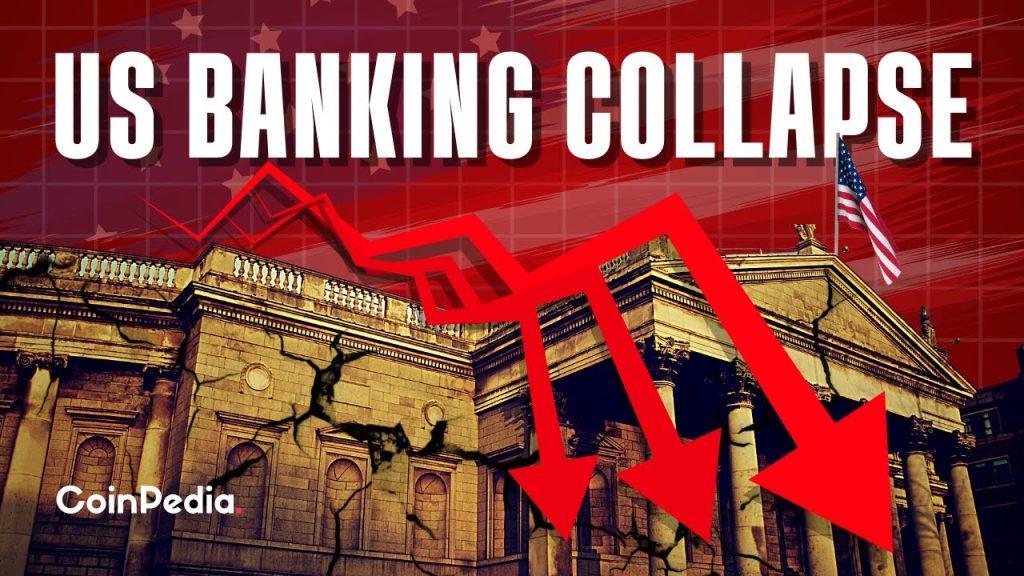
The post Banking Apocalypse: The Collapse of US Banks in 2023 appeared first on Coinpedia Fintech News
Something is happening in the United States of America.
This American dream is built on the promise of wealth and security. But, what happens when that dream comes crashing down?
Silicon Valley Bank is one the 16th largest banks in the United States.
Also, one of the biggest banking failures in the US.
So join us, as we explore the collapse of the US banking sector in 2023 and the connection to Bitcoin as an alternative financial system.
Historical Context of the US banking sector
For over a century, the US banking sector has been the backbone of the American economy, with thousands of banks and trillions in assets. Banks of all sizes, from small community banks to massive multinational institutions, have played a vital role in keeping the economy afloat.
Over the years, the US banking sector has faced many crises, such as the Great Depression of the 1930s, the Savings and Loans crisis of the 1980s, and the 2008 financial crisis.
The 2008 crisis, triggered by a housing market collapse, wreaked havoc globally, leading to recessions and job and home losses. The crisis had a significant impact on the global economy, with many countries entering into global recessions and millions of people losing their jobs & homes
Yet, the industry has adapted through technology and regulations.
But in the year 2023, the US banking sector experienced another devastating collapse, and many experts have warned of a forthcoming collapse.
Key Factors Contributing to the Collapse
The US banking sector collapsed due to a housing market bubble, risky bank practices, and regulatory mismanagement. Banks heavily relied on short-term borrowing, leaving them vulnerable to market changes.
When the US Federal Reserve raised interest rates, the banking industry faced immense pressure, leading to a decline in consumer spending and economic growth.
Silicon Valley Bank’s failure triggered a domino effect, leading to the collapse of other institutions. Eventually, it was a major lender to tech startups, resulting in bad loans and defaults.
The interconnectedness of the banking system meant that the collapse of one institution could trigger a chain reaction throughout the entire system, leading to a catastrophic failure.
Over the course of five days in March 2023, Silvergate Bank and Signature Bank also failed, causing a sharp decline in global bank stock prices.
According to this analysis, this collapse was driven by high leverage and the inability to repay debts. It had a ripple effect on various industries, impacting society at large.
Impact of the Collapse on Society
Eventually, the consequences of this collapse were devastating for the general public, leading to job loss, homelessness, and protests. Access to money became difficult, causing chaos and long bank lines, and vulnerable groups, like low-income families and seniors, suffered the most.
The collapse highlighted the need for a stable and transparent financial system. In a time of uncertainty, Bitcoin emerged as a potential alternative to traditional finance.
Bitcoin operates independently from any government or financial institution, and its decentralized nature offers a level of stability & security that was lacking in traditional banking.
It is designed to be fast, transparent, and accessible to anyone with an internet connection. However, concerns about its adoption and regulations persisted.
Actions Taken by the US Government
The US government interventions aimed at stabilizing the banking sector included capital injections, mortgage rate freezes, and additional funding for small businesses. The effectiveness of these measures remains a topic of debate.
Bitcoin, operating independently from government control, remained largely unaffected by the collapse.
However, the government’s response to Bitcoin has been mixed, citing that it is a highly speculative and volatile asset, and warning them to exercise caution in their dealings with cryptocurrencies
Conclusion
Despite challenges, Bitcoin’s transparency and security have attracted growing popularity as a financial alternative during the crisis. Its potential as a dominant financial system depends on the establishment of a suitable regulatory framework.
Well time will tell what the future holds, but one thing is certain – the collapse of the US banking sector has changed the financial landscape forever.

 1 year ago
126
1 year ago
126














 English (US) ·
English (US) ·